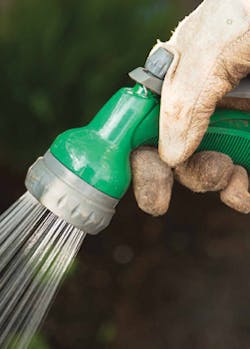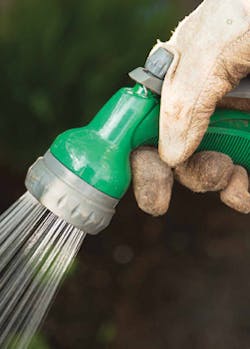Asia/Pacific
ANALYSIS: Australian Water Association sets out vision for water efficiency
Water efficiency must be considered alongside supply options as Australia's climate is highly variable and emerging pressures such as population growth will affect the security of water supplies in ways that are difficult to predict, a new position paper has said.
Released by the Australian Water Association (AWA), the paper said that the case for water efficiency was a need for "greater consistency in approaches taken to water efficiency across the country would facilitate the sharing of experiences and would minimize the risk of research being duplicated".
Recent rainfall across many of Australia's cities provide respite from severe drought conditions and has led to the lifting of water restrictions in many areas. This has also reduced the emphasis that some governments and local utilities place on water efficiency measures, according to the AWA.
The industry agreed efficiency measures should be carried out regardless of rainfall levels. A State of the Water Sector Survey 2012 from the AWA/Deloitte asked the question "Drought conditions have eased across much of Australia over the past 18 months. To what extent should water conservation and efficiency programe be curtailed during wetter periods?". Over half (67%) of respondents answered "Not at all" or "Marginally".
As Neil Palmer, CEO of the National Centre of Excellence in Desalination Australia wrote in July-August 2010 issue of WWi, in terms of supply, desalination has certainly come of age across Australia. The level of investment into desalination technology in just six years has been astonishing.
By the end of this year, Australia will have its sixth large-scale seawater desalination plant operational, helping to supply water up to 40% of public needs. A combination of drought, climate change, advances in reverse osmosis technology has led to an increase in desalinated water over 10 years from 2005 to 2015 from less than 100 ml/day to more than 1800 ml/day.
Australia's first plant came into service in November 2006 - the Perth Seawater Desalination Plant in Western Australia, with a capacity of 145 ML/d.
Since then, a further five large seawater desalination plants have been created along the coastline with the largest at Wonthaggi, just outside Melbourne, at 450 ML/d capacity nearing completion.
By 2015, these will be capable of providing up to 30% of Perth's drinking water needs, 10% of Brisbane's, 15% of Melbourne's, 10% of Sydney's and 40% of Adelaide's from the plentiful sea resource.
However, the AWA position paper warned that a too heavy handed approach to enforcing water efficiency could have an adverse affect on supply. It said that changes to water prices to stimulate conservation, restriction and other measures directed to reducing water demand may have the effect of stimulating a shift to alternative sources of supply.
Spreading risk across various water supply options might not be bad move, the industry would think. Yet AWA said: "This may be appropriate and beneficial but should be assessed on a case-by-case basis as there can be undesirable impacts.
"For example, a shift to local groundwater supplies may deplete aquifers or lead to saline intrusion, and more widespread use of rainwater tanks may lead to a significant increase in energy usage."
Smart metering was touted one water efficiency measure for Australia. A number of utilities have embarked on programmes to install 'data loggers' at commercial premises to provide a finer, more immediate, analysis of water use, it said. "This information is a fundamental pre-cursor to the design of good water efficiency programs", said the AWA. On a household level, support was shown for improvements in water meter accuracy and the delivery of monitored date to easy-to-read interfaces such as phone apps and web portals in homes and workplaces. The paper said these would strengthen the awareness of water efficiency and the ability to identify and act upon issues.
The subject of tariffs and what water should cost did not escape from the report. The AWA concluded that the "setting of a price that reflects the full costs of supplying water services to consumers is an essential component of water efficiency. If water is under-priced it will be over-consumed….AWA also believes that it is essential that the price charged to consumers fully reflects the cost of supply and that price structures to be economically efficient."
Going forward, to meet its water needs in the future, Australia will need to ensure its approach is diverse and tailored to circumstances.Water efficiency measures must always be part of the mix, not just in Australia but globally.

